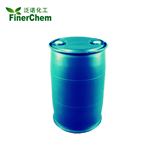
Hexanal
- Product NameHexanal
- CAS66-25-1
- CBNumberCB9854088
- MFC6H12O
- MW100.16
- EINECS200-624-5
- MDL NumberMFCD00007027
- MOL File66-25-1.mol
- MSDS FileSDS
Chemical Properties
| Melting point | -56 °C |
| Boiling point | 130-131 °C(lit.) |
| Density | 0.816 g/mL at 20 °C |
| vapor density | >1 (vs air) |
| vapor pressure | 10 mm Hg ( 20 °C) |
| refractive index | n |
| FEMA | 2557 | HEXANAL |
| Flash point | 90 °F |
| storage temp. | 2-8°C |
| solubility | 6g/l |
| form | Liquid |
| color | Clear colorless to slightly yellow |
| PH | 4-5 (4.8g/l, H2O, 20℃) |
| Odor | Pungent. |
| Odor Threshold | 0.00028ppm |
| Odor Type | green |
| Water Solubility | 4.8 g/L (20 ºC) |
| Sensitive | Air Sensitive |
Safety
| Symbol(GHS) |
 
|
|||||||||
| Signal word | Warning | |||||||||
| Hazard statements | H226-H315-H319 | |||||||||
| Precautionary statements | P210-P233-P240-P241-P303+P361+P353-P305+P351+P338 | |||||||||
| Hazard Codes | Xi | |||||||||
| Risk Statements | 10-36-36/37/38 | |||||||||
| Safety Statements | 37/39-26-16-9 | |||||||||
| RIDADR | UN 1207 3/PG 3 | |||||||||
| WGK Germany | 1 | |||||||||
| RTECS | MN7175000 | |||||||||
| F | 13 | |||||||||
| Autoignition Temperature | 220 °C | |||||||||
| Hazard Note | Irritant | |||||||||
| TSCA | Yes | |||||||||
| HS Code | 2912 19 00 | |||||||||
| HazardClass | 3 | |||||||||
| PackingGroup | III | |||||||||
| Hazardous Substances Data | 66-25-1(Hazardous Substances Data) | |||||||||
| Toxicity | LD50 orally in rats: 4.89 g/kg (Smyth) | |||||||||
| NFPA 704: |
|


